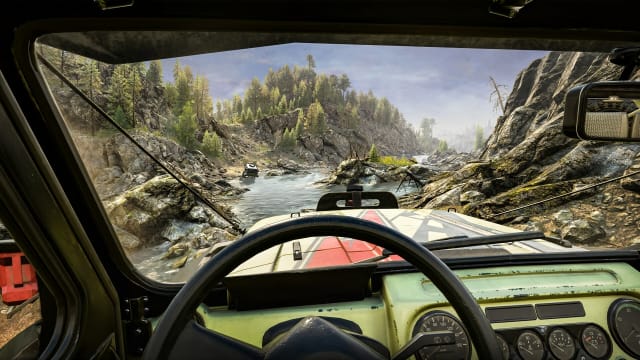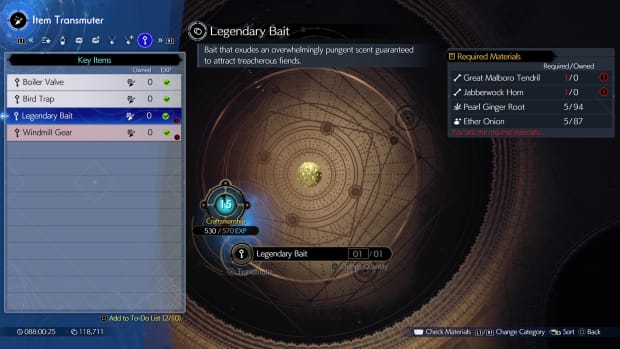
Expeditions: A MudRunner Game review – don’t call it SnowRunner 2
Remember that Death Stranding-inspired SnowRunner trailer? That's exactly when the entire MudRunner franchise landed on every gamer's radar. It was instantly a hit, reaching over 10 million users, and it's still getting new content as proof of that success.
Many took it for granted that Saber Interactive would go for a bigger approach. Surprisingly enough, the team has instead gone back to the roots of the franchise. Expeditions: A MudRunner Game is a spiritual heir to Spintires and MudRunner, albeit with a range of original twists and systems borrowed from the previous game.
The game is primarily based on the concept of scientific expeditions. It has a level-based structure instead of a true open world, and that is at least a major point of divergence from SnowRunner. Especially in the early game, this undermines what was SnowRunner's biggest selling point - that sense of traveling through a world actively working against you, and the discovery that follows.
Due to these smaller maps, the waypoint system is a downgrade from SnowRunner. The previous game’s open world forced you to plan ahead and chart your own course across the world. Here you can often traverse it by eye rather than marking the various points to follow and trusting your choices as a cartographer.
However, contracts and side assignments encourage you to explore the maps beyond the more linear main expeditions. The varying sizes of these sandboxes led the developers to get a little more inventive, often leaving mud and rough terrain behind in favor of slopes and vertical traversal-based challenges.
In the style of the franchise, missions are typically very long. And you know what else is in the style of the franchise? Checkpoints. Checkpoints are triggered randomly and there is no save system, which is something fans have gotten used to over the years. Be prepared to lose progress if you need to go out on an errand during an expedition, or to find the game saved only at the exact moment when you rolled over with your truck.
You get into the game for an expedition, and once done, you can stay as long as you like for assignments and contracts. These allow you to explore more of the same sandbox. This isn’t a true open world, but that doesn't mean there is less to do. The game features plenty of areas where you can tackle quests for 100+ hours of content. Side missions feel more true to the spirit of SnowRunner, requiring you to travel longer and more challenging routes, if only for fuel management. If you're desperate for that feeling, make sure to check them out.
The scientific theme and the new tools compensate for the transition to a more condensed design. You can now manage the tire pressure, making it easier for trucks to climb steep terrain. Beware of keeping your vehicle low for too long, though: it could cause tire damage. Another personal favorite of mine is the echo sounder, allowing you to get a clear idea of how deep a body of water is before diving in. I'm also sad to report that the winch, an absolute star in SnowRunner, is a bit of a downer. You’re more concerned with your vehicle tipping over than being stuck in the mud this time around, so the winch feels useless in most situations.
Mission design is not particularly brilliant. Light QTEs have been introduced to operate drones and probes, but almost every expedition ends with a generic request to explore the environment to fill a bar. This can be frustrating, especially as the game wants you to be extremely precise in exploring every inch of the map.
Operators are an interesting addition, introducing yet another management layer to care about. Keep an eye on the budget, as they can be quite expensive, and the results in bonuses. The latter helps out in different ways, depending on the mission type and the terrain you'll deal with - for example, the hydrologist is great if you want to negate water damage. The only issue is that they're mandatory throughout the core campaign, so you'll have to go for the side content to get the best out of this strategic layer.
That's also where you'll find the bland base-building component useful. Wandering around the outposts, you'll spot slots available for you to build various structures. These grant bonuses and supplies, and will stay there permanently every time you return to the same sandbox. They cost a lot and don't feel essential on your first run. However, like the contracts bringing you cash for better vehicles, it's this type of activity that you'll gravitate towards in the long run.
The handling has largely stayed true to SnowRunner's. You can feel precisely how heavy your truck is, and how that heaviness is distributed along the bodywork of the vehicle. All the traditional environmental obstacles make traversal the real challenge, more than the objectives of a mission themselves. Cornerstones such as gear shifting and the various assists you can turn on or off on the fly are back, with the pros and cons you've come to learn in previous games.
My feeling is that cars are the stars this time around, at least throughout the critical path. Most of the main expeditions seemed easier with a car rather than with a truck. However, you can still play them with any vehicle you like. The game merely suggests the best fits, as well as clearly pointing out the level of challenge it'll come with.
Expeditions: A MudRunner Game entertained me more than I was expecting based on my preview. I didn't like the choice to axe the open-world formula, and I still don't. After SnowRunner, it just feels like a step back for the series. However, the game is solid, and grows exponentially the more time and dedication you invest in it.
Score: 7/10
Version tested: PC, Steam Deck
Expeditions: A MudRunner Game technical performance
In technical terms, Saber did a pretty good job. The game runs smoothly and is pleasing to the eye both on PC and at default settings on Steam Deck. In the latter case, I only noticed minor issues with the size of some texts. I'm remarking this as SnowRunner was a mess at launch, riddled with crashes that took a long time for the developer to fix. Based on our experience, things look different on the platforms we were able to test.








